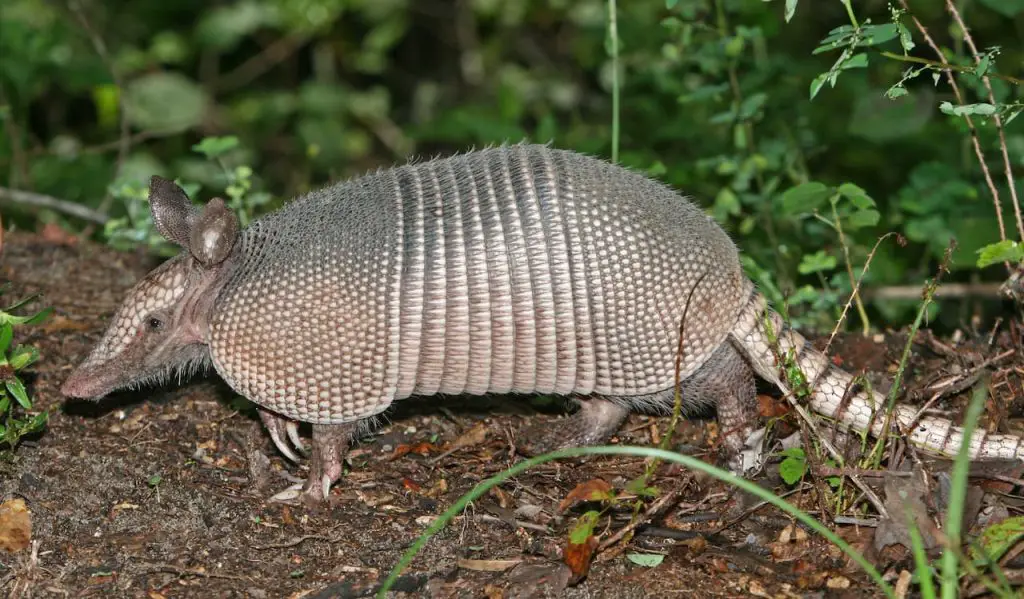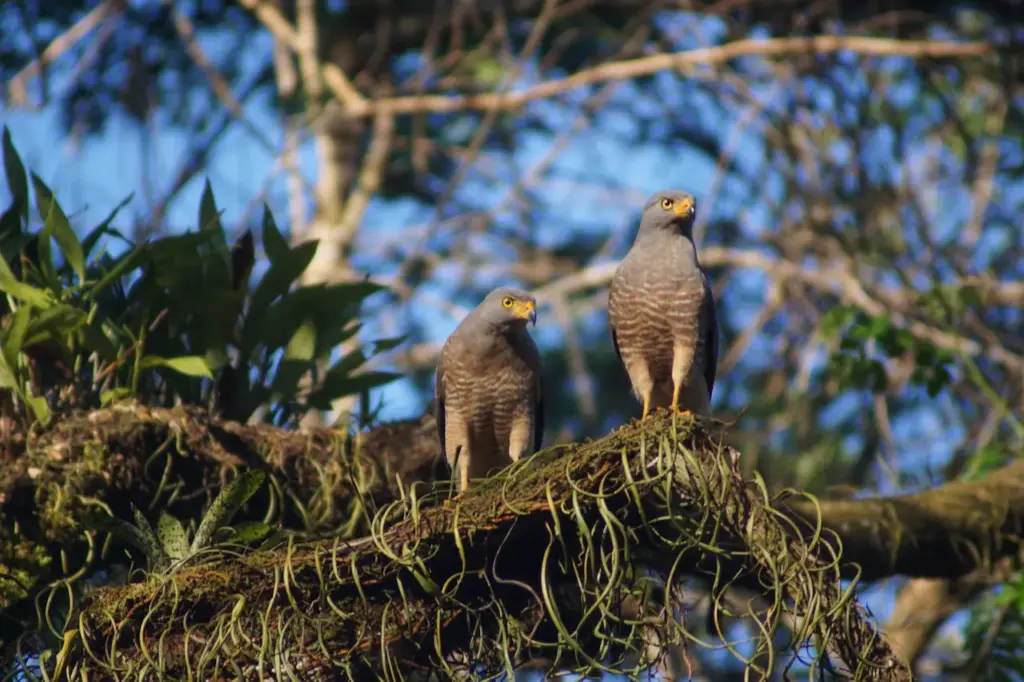What Eats An Armadillo?
Categories
- Accipitridae (1)
- Acrididae (1)
- Algae (2)
- Alligatoridae (1)
- Amoebidae (1)
- Amphibians (3)
- Anatidae (1)
- Anguillidae (1)
- Arachnids (2)
- Bears (2)
- Big Cats (3)
- Birds (13)
- Bovidae (5)
- Bufonidae (1)
- Camelids (1)
- Cameras (1)
- Canines (13)
- Caridea (1)
- Carnivora (10)
- Castoridae (1)
- Cats (5)
- Cebidae (1)
- Cephalopod (1)
- Cervidae (2)
- Cetacean (1)
- Chondrichthyes (1)
- Crocodilia (2)
- Crustaceans (4)
- Culicidae (1)
- Cyaneidae (1)
- Dasypodidae (1)
- Dasyurids (1)
- Deer (1)
- Delphinidae (1)
- Desktop (1)
- Didelphidae (1)
- Dinosaurs (1)
- Dogs (13)
- Dolphins (2)
- Echinoderms (1)
- Education (10)
- Elephantidae (1)
- Equine (1)
- Erethizontidae (1)
- Erinaceidae (1)
- Farming (1)
- Felidae (5)
- Fish (5)
- Food Chain (31)
- Food Web (2)
- Formicidae (1)
- Frugivore (1)
- Gaming (1)
- Gastropods (1)
- Giraffids (1)
- Great Apes (2)
- Health Conditions (3)
- Herbivore (4)
- Hi-Fi (1)
- Hippopotamidae (1)
- Hominidae (1)
- Insects (10)
- Invertebrates (2)
- Keyboards (1)
- Laptops (1)
- Leporidae (1)
- Mammals (23)
- Marsupials (4)
- Mephitidae (1)
- Microchiroptera (1)
- Mollusks (2)
- Mongoose (1)
- Muridae (1)
- Nocturnal Animals (1)
- Odobenidae (1)
- Omnivore (2)
- Phasianidae (1)
- Phocidae (1)
- Plankton (1)
- Plants (2)
- Primate (1)
- Ranidae (1)
- Reptiles (7)
- Rhinocerotidae (1)
- Rodents (5)
- Salamandridae (1)
- Scarabaeidae (1)
- Sciuridae (2)
- Sharks (1)
- Shellfish (1)
- Sound (1)
- Spheniscidae (1)
- Suidae (1)
- Superfamily Papilionoidea (1)
- Theraphosidae (1)
- What Eats (5)
An armadillo doesn’t wear that armored shell for nothing! A number of predators, or natural enemies, like to eat armadillos.
Chief among the armadillo predator is the coyote. But such predators as bobcats, cougars, wolves, bears, raccoons and even some of the larger hawks and other birds of prey will also attack and devour an armadillo.
Armadillos are the only mammals that have shells around the body. No other living mammal possesses that quality. They are closely related to anteaters and sloths. They have pointed or shovel-shaped snouts and tiny eyes. These mammals vary in size. Some Armadillos are of few inches in size and some are five feet in size.
Armadillos have their own protective covering of armor. In Spanish, the word “armadillo” means “small armored one.” This is due to the bone plates that protect their head, neck, and back. Some armadillo species can curl up under their armor, whereas others cannot.
In this article, we will learn about the predators that eat Armadillo. We will investigate the ways, in which these predators attack them and what patterns they follow.
Without any further delay, let’s dive in and find out more!
Table of Contents
ToggleWolves
Wolves are carnivorous creatures. They mostly kill and eat hoofed mammals like deer, moose, and elk. These creatures make up the majority of their food since wolves require a lot of protein to keep their energy levels stable.
Wolves are opportunistic hunters who will take smaller animals if the chance comes. This includes armadillos. This is especially true in areas where their habitats overlap.
While it may look like Armadillos are hard prey for wolves because of the strong shell over their body but reality is different. They are one of the most easy prey for wolves. We know that wolves have strong biting power. This biting power easily overcomes the strength of the shell.
Wolves capture the prey and stick their teeth in their shell. Immature armadillos make a more viable target. These youngsters have weaker, immature shells than their fully armored adult counterparts. It makes them more vulnerable.
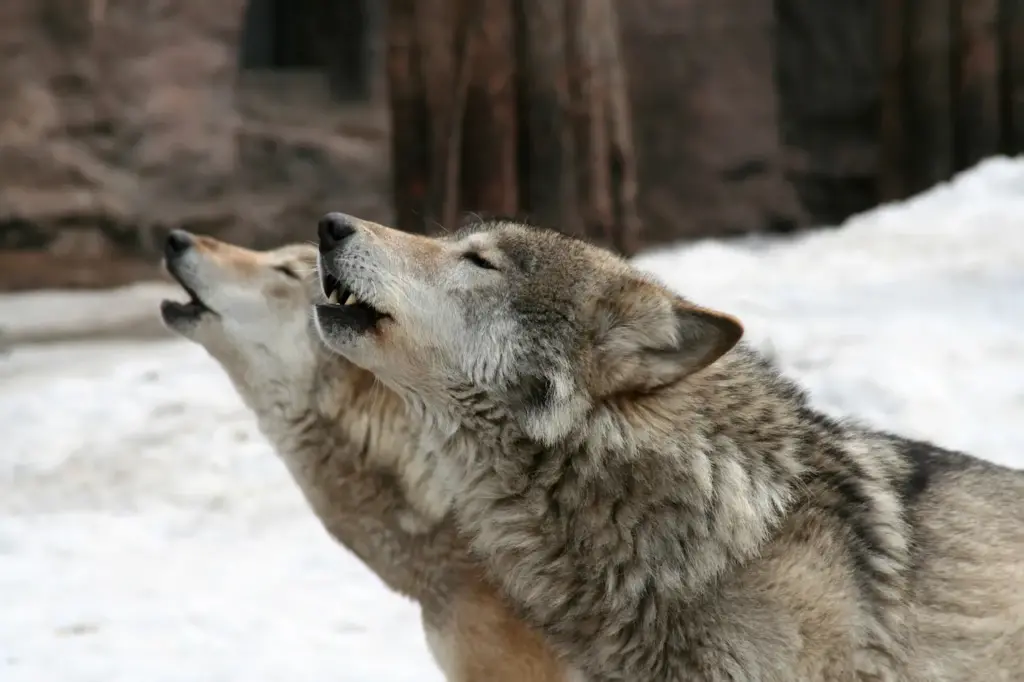
Two Wolves Howl at Winter
Black Bears
Black Bears are strong predators. It is evident that Black bears feed on armadillos. All other animals of this group are omnivores except pandas and polar bears. Bears have a keen sense of smell. They utelize it and accomplish the majority of their hunting. These mature animals may measure 50-80 inches in length, with males being bigger than females.
Because black bears spend half the year hibernating. They accumulate fat stores during the summer and spring. Their diet is heavy in fat, protein, and sugar. They obtain via eating berries, nuts, insects, and animals such as armadillos and coyotes. Bears may appear ungainly, yet they are swift predators who can easily chase their prey.
Coyotes
Unlike armadillos, these creatures have a good sense of sight and smell. It allows them to forage through dense foliage. This is because Coyotes belong to the Canidae family and are comparable to dogs, foxes, and wolves. They may grow up to 4.5 feet from head to tail.
They can also run at speeds ranging from 40 to 45 mph. It enables them to chase their prey efficiently. Coyotes are not discriminating eaters, they hunt whatever is available in a given area.
Their ability to see and hear well, run rapidly, and consume whatever is available makes them one of the most powerful predators of armadillos. It is also observed that they may take down much bigger animals such as deer when hunting together. They do so if they feel threatened.
Usually, they chase armadillos alone or in groups. They are clever hunters and they developed genius techniques to hunt Armadillos. They have a much more rapid pace than small-sized Armadillos. This gives them a deciding advantage over their prey. They run before them and hurl them into their trap.
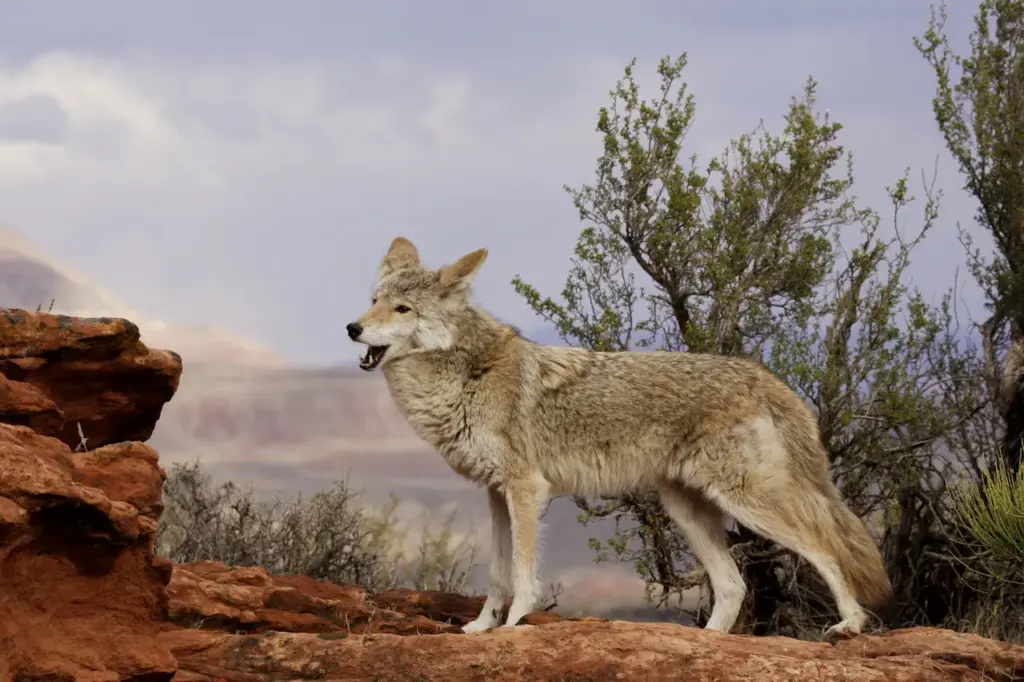
Coyote Yelping What Eats Coyote
Foxes
Foxes are one of the most clever animals in the animal kingdom. They know their ways.
Foxes are members of the Canidae family, They are capable of attacking and hunting armadillos. Foxes are omnivorous, feeding on both vegetables and meat.
Foxes are light mammals due of their tiny stature and may reach speeds of up to 45 mph. A fox’s diet consists primarily on tiny creatures, such as rabbits. However, as opportunistic hunters, they will eat whatever is available to them. Foxes may hunt during the day, although they are more active at night.
It is no surprise that they are one of the armadillo’s primary predators. They chase armadillos when they need food. For foxes, Armadillos are easy prey. Foxes have great speed and they can climb tree as well. In addition to that, their small body allows them to chase Armadillos even in their tiny caves.
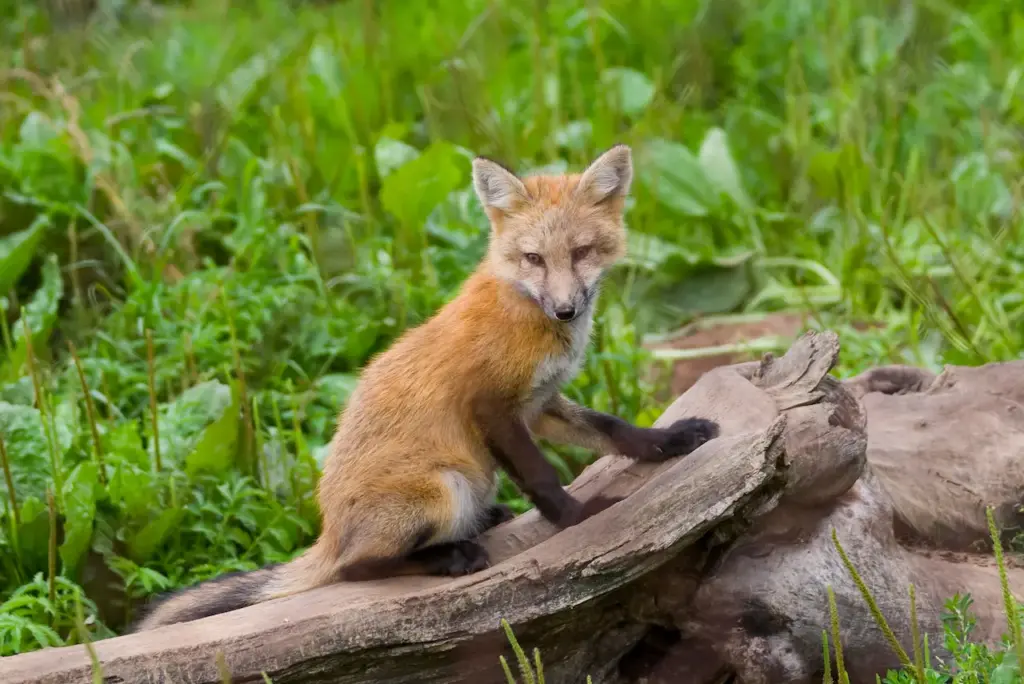
What Eats A Fox What Do Foxes Eat
Cougars
Cougars are large cats found throughout North, Central, and South America. They are known as mountain lions, or pumas. These large cats are clever predators. They stalk their prey before killing it. They mostly hunt mountain goats, wild sheep, and other hoofed animals.
However, a hungry cougar may hunt less attractive species, such as armadillos. Cougars are not discriminating eaters; they will hunt whatever is abundant in their area.
It has been observed that cougars and armadillos coexist and hunt during the same midnight hours. Because of this overlap in habitats, armadillos are plausible prey.
Armadillos may not appear to be an ideal food for a cougar’s strong jaws, but these enormous cats are adept at exploiting flaws. They may target younger or less attentive armadillos, which are easier to capture and breach with their powerful bite.
The presence of cougars in an environment is critical to maintaining population balance among other species. They hunt Armadillos whenever their population grows beyond their natural habitat.
Bobcats
Bobcats are also known to prey on armadillos. They are medium-sized cats named after their short, spotted tails. Bobcats stand 21 inches tall and may grow up to 50 inches long. These cats are natural survivors and scavengers. They inhabit a wide range of environments. It includes swamps, forests, deserts, and even suburban areas.
Their regular food consists of rabbits and hares. When food is short, they may attack rodents, birds, and, on rare occasions, deer. They stalk their prey before striking, and they are extremely patient predators. They also hunt at night and may assault armadillos for food.
Raccoons
Have you ever seen a Raccoon? If not, let us tell you that Raccoons are furry animals. They are the size of small dogs. These bushy-tailed critters are omnivorous, feeding on both meat and plants. A raccoon’s food is determined by its habitat, and it typically eats berries, fruits, rodents, insects, and so on. They are drawn to garbage cans while searching for food in metropolitan areas.
Raccoons are also recognized predators of armadillos. They are bright and curious animals with exceptionally skilled limbs. Their front legs function as slender hands, but the back legs are bigger and longer, allowing them to fight armadillos. They overcome armadillos and eat them as their food.
Hawks
Hawks are renowned for being formidable predators. They can rapidly pursue animals thanks to their ultra-sharp eyesight and height advantage. Some hawks may dive as fast as 150 mph. This, paired with their pointed beak and high visual acuity, makes them effective predators.
Once they have secured their prey, hawks rip it into pieces, preventing it from escaping. Hawks typically hunt on newborn armadillos with weaker shells.
Want to know what eats a hawk? Read: What Eats Hawks
Humans
Some people in Mexico, Central America and South America also eat armadillos, whose meat is sometimes used as a substitute for pork.
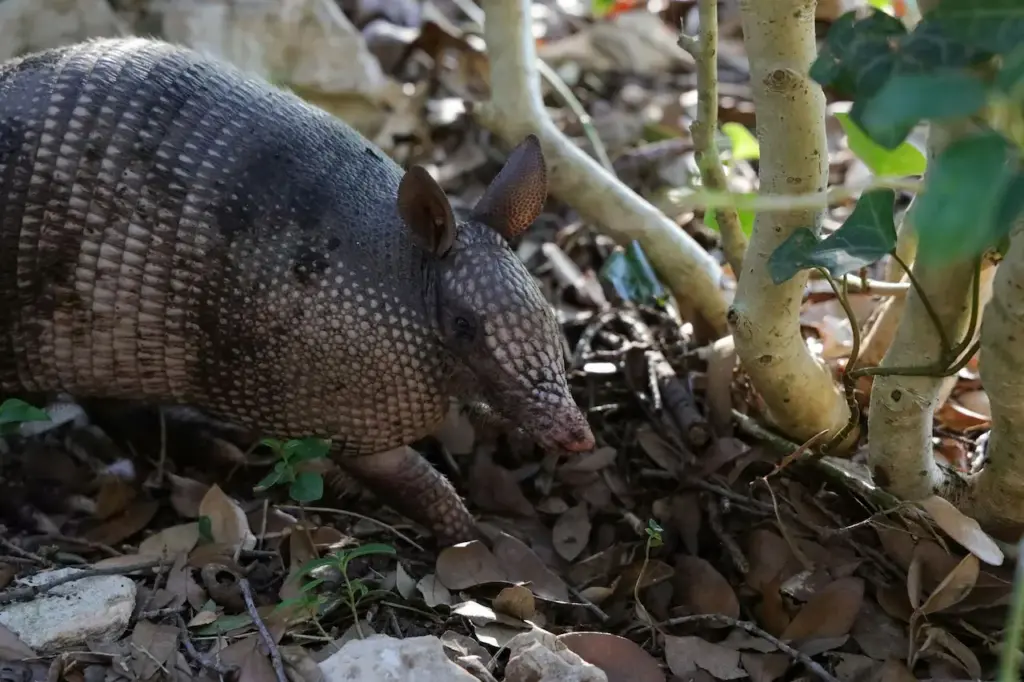
Armadillo In Scrub
Conclusion
Armadillos have plenty of natural predators. They prey on armadillos in different environments. These armadillos fight for their lives but most of the predators have the upper hand in this fight for life. They capture and kill this innocent mammal anyway.

